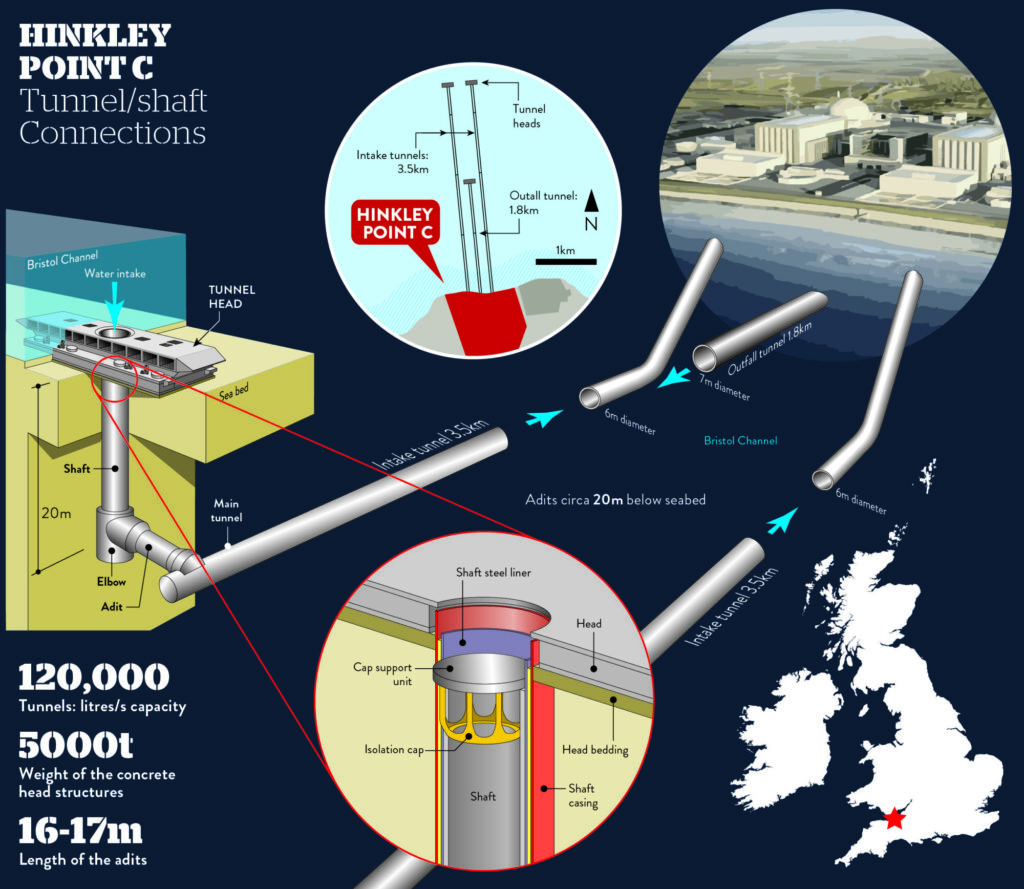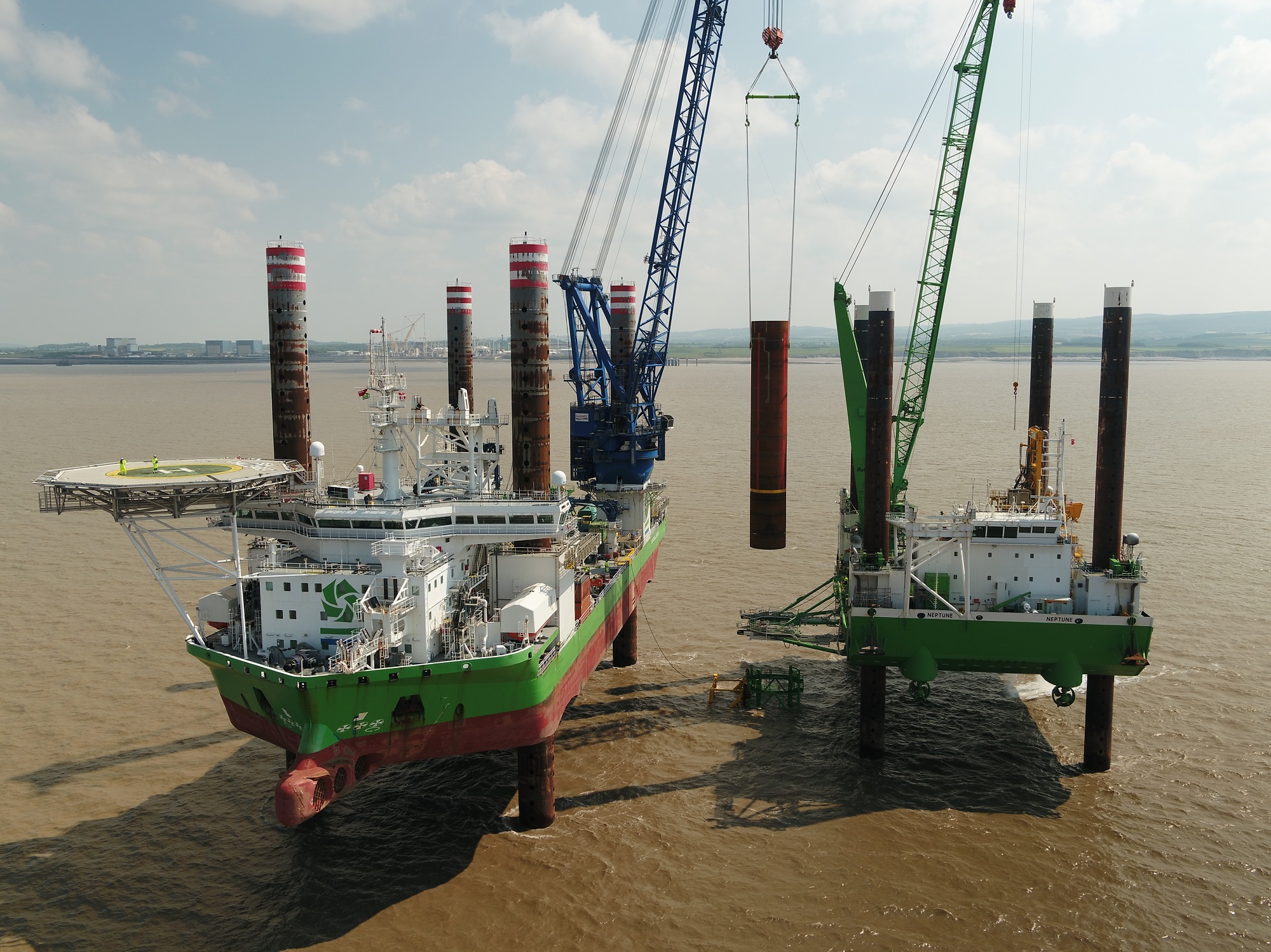To keep itself cool, Hinkley Point C nuclear power station must draw in and flush out enough water to fill 4,200 Olympic swimming pools – every day.
To do this, it needs 5.5 miles (8.8 kilometers) of tunnels located nearly 100 feet (30 meters) underneath the Bristol Channel, which has the second highest tidal range in the world.
Amentum designed the intake and outfall heads, shafts and tunnels for our client Balfour Beatty to deliver this engineering marvel, without which the UK’s first nuclear power station for nearly 30 years could not have been built.
“These are the first nuclear qualified tunnels to be designed in the U.K.,” says Amentum’s HPC Marine Works Project Manager Steve Marshall. “They will have the capacity to transfer 2.7 billion U.S. gallons (10.4 million cubic meters) of cooling water a day.
“There is a blueprint for building reactors but marine works to deliver the cooling water can never be exactly the same because we’re always dealing with different geology and tidal ranges,” he explains. “Added to this, we have the nuclear safety aspect and the need to build structures that are capable of doing their jobs for an 85-year design life with very little maintenance. They also have to be capable of withstanding a 1-in-10,000 year earthquake and extreme waves in the stormiest sea conditions.”
The design team’s innovative approach to reinforced concrete design and the use of 3D modelling for the offshore heads saved on construction costs for Hinkley Point C developer, EDF, and also reduced health, safety, and environmental risks.
The connections between the heads and the main tunnels are among the most complex and fascinating aspects of the design. They posed a unique problem at a scale that is without precedent anywhere else in the world. In the summer of 2022, a series of incredibly complex tandem floated lifts were used to place the 5,000-metric-ton (~10-million-pound) offshore heads into pre-excavated pockets on the bed of the Bristol Channel. During the summer of 2023, jack-up vessels Neptune and Sea Challenger spent ten weeks lowering the steel casings into place on the rock strata.
With the casings in place underneath the heads, specialist offshore contractors can drill down to the bottom of the shaft and excavate the rock before installing steel liners, which are capped to prevent seawater from getting inside the drilled shaft. Remotely controlled demolition robots complete the tunnel-to-shaft connection by excavating a breakout from the main tunnel and connecting to the steel liners via tunnels supported by rock bolting and a spray concrete lining (SCL). The steel liners, casings and rock bolted SCL are temporary structures whose purpose is to create a void so that permanent reinforced concrete linings can be poured into the shaft, creating a seamless route for essential cooling water to travel to and from the power station.

